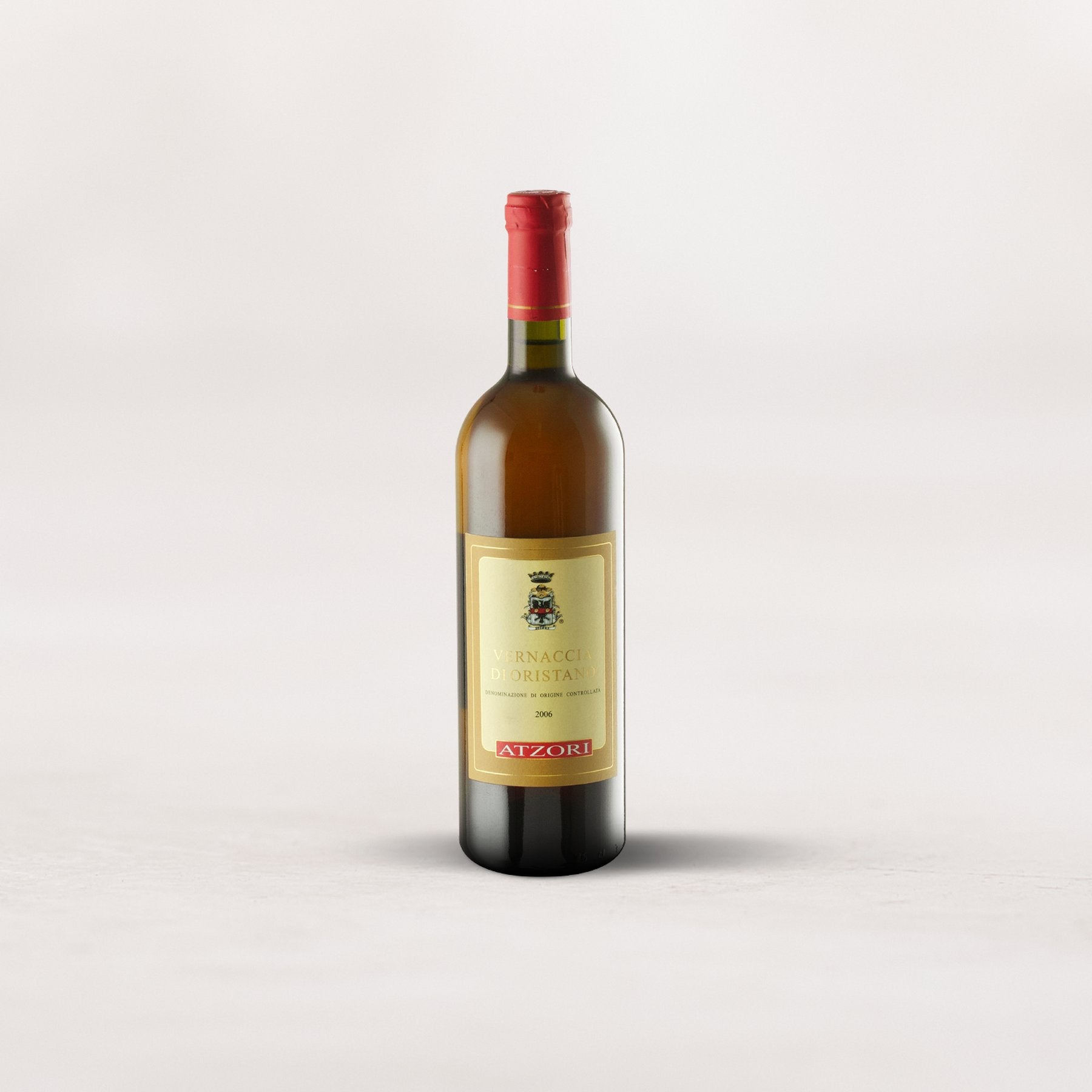This wine is one of the most low-risk, high-reward Italian investments you’ll make. But it’s also a wine for the most curious and passionate wine aficionados among us. Vernaccia di Oristano is a rare wine commodity, these days produced by only a precious few, yet, despite its seemingly limitless aging potential, the wine’s (extremely modest) price belies its obscurity.
Only when you are equipped with the appropriate context can you fully appreciate today’s 2006 from Francesco Atzori. Headquartered in the seaside town of Cabras, about halfway up Sardinia’s west coast, Atzori is one of a handful of diehards producing Vernaccia di Oristano, which I’ve described previously as a kind of vinous artifact: It’s not a dry Sherry, though it strongly resembles one, nor is it a fortified/dessert wine, though it would likely be placed among those on a restaurant wine list. It requires extra explanation—and, in this case, an exceptional amount of patience on the part of its maker before it goes into a bottle. If you are among the legion of wine lovers caught up in the ongoing Sherry renaissance, this extremely rare Italian specialty deserves a spot in your rotation. Before, during, after dinner…this is a wine experience like no other!
Known as Tharros when it was founded by the ancient Phoenicians (who also, incidentally, founded the Sherry town of Cádiz) Cabras is one of about 20 small communes (including neighboring Oristano) that comprise the Vernaccia di Oristano appellation. Some Italian wine aficionados may recognize the grape name “Vernaccia” from other regions (Tuscany; Marche), but this Sardinian Vernaccia has no relation to any others; the name Vernaccia may be derived from the latin vernaculus (“domestic,” “native”) and as such there several “Vernaccias” throughout Italy, each appended with a geographic locator to tell them apart.
As in Marsala, in neighboring Sicily, a culture of Sherry-style wine production developed in Oristano many centuries ago. The Spanish Aragon dynasty controlled Sardinia from the 15th to the 18th centuries, and much of the island’s viticulture and cuisine has a “Spanish” tinge to it, so it’s quite possible the Marsala/Oristano wine trade grew up alongside that of Jérez, but there are some fundamental differences between Vernaccia di Oristano and Sherry—the biggest being the fact that Vernaccia di Oristano is not a “fortified” wine. Atzori’s bottlings reach 15-17% alcohol naturally, via evaporation over time.
Yet, there’s lots of Sherry styling in play here, too: The white Vernaccia grapes, late-ripening and loaded with acidity, grow in sandy, gravelly soils traversed by an assortment of streams that feed into the lagoon near Oristano. After harvest, the wine is fermented on indigenous yeasts and placed into a mix of chestnut and oak casks, which are filled to about 90% capacity: This encourages the growth of the film-forming yeast known as flor, which prevents the juice from oxidizing and allows for a measured evaporation. Today’s wine aged under flor for many years in cask (known as “biological aging” in Sherryspeak).
As in the case of Amontillado Sherry, however, the flor eventually dies off and the wine then undergoes a period of “oxidative” aging, during which it developed its deep golden-amber color and aromatic cacophony of nuts, golden raisins, spices, and so much more. In total, Atzori aged this ’06 some 15 years in casks, plus an additional period in bottle, before the wine was released. Only around 150 cases were produced. I don’t know how we managed to get some, but we did!
This 2006 doesn’t offer the shelf life of a Sherry or Madeira, but I can’t see how that would be a concern—once you’ve had a sip, it’s likely to disappear soon afterward. It’s only marginally stronger than the average glass of Chardonnay, so grab a friend or two and enjoy it at cellar temperature (or perhaps slightly more chilled, say 50 degrees) in all-purpose white wine stems. It would make a perfect partner to aged Sardinian Pecorino with almonds and honey, but this wine could easily be plugged into any course of a meal—including dessert, where its dryness would be welcome alongside sweeter chocolate preparations.
In the glass, it’s a deep gold-amber with hints of orange, with highly complex aromas of figs, dates, dried orange peel, chopped almonds, crème brulée, warm spices, and an evocative hint of sea spray. It is full-bodied but full of buoyant freshness, with a resolutely dry finish—which prompts me to suggest pairing it with some Mediterranean seafood or even richer meat dishes (it’d be delicious with porchetta). I vividly remember tasting Vernaccia di Oristano with a local dish of Sea Bream that incorporated the wine. The attached recipe captures its spirit, and trust me—it is so worth trying. The likelihood of seeing this or any other Vernaccia di Oristano is somewhere between low and nonexistent, so take advantage while you can. Enjoy!






